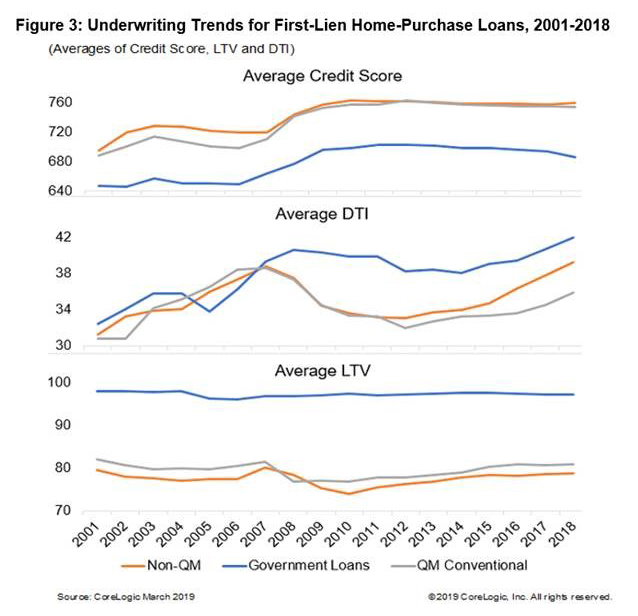
Initially, credit risk transfer (CRT) and seasoned re-performing loan (RPL) transactions drove this growth. The broader non-agency RMBS market has shown stable growth over the past several years, with issuance increasing from $70 billion in 2017, to $95 billion in 2018, and then to $124 billion in 2019. Although annual doubling of volume is unsustainable long term, we are forecasting continued non-QM issuance growth this year, with an expected $35 billion in 2020, up from $25 billion last year. 20, 2019, commentary, "Non-QM's Meteoric Rise Is Leading The Private-Label RMBS Comeback") has propelled the exponential growth in non-QM issuance over the past four years. The surge in the number of non-QM issuers and loan sellers/originators (which we discussed on in our Sept.

Non-QM loans collateralize the fastest-growing segment of the non-agency RMBS market.

We discuss our methods and findings in this publication. The analysis also allowed us to understand how the spreads are changing over time. How are various loan-level attributes contributing to this spread? We performed an analysis of the underlying loans of non-QM transactions rated by S&P Global Ratings to determine this. residential mortgage-backed securities (RMBS) grows, competition among originators and sellers appears to be driving down the effective interest rate charged to borrowers, as measured by the spread to a relevant benchmark. Our 'AAA' loss coverage has been increasing over the past three years.Īs the investor appetite for non-qualified mortgage (non-QM) U.S.

NON QM MORTGAGE RATES MAC
The spread to the Freddie Mac rate has tightened over the past several years (for both FRM and ARM loans), but is starting to widen again.When analyzing non-QM loan spreads to the conforming rate, we found that the most meaningful factor affecting the spread is the FICO score.Non-QM interest rates have an average spread to the Freddie Mac conforming rate of roughly 250–315 bps (depending on whether the rate is fixed or adjustable).


 0 kommentar(er)
0 kommentar(er)
